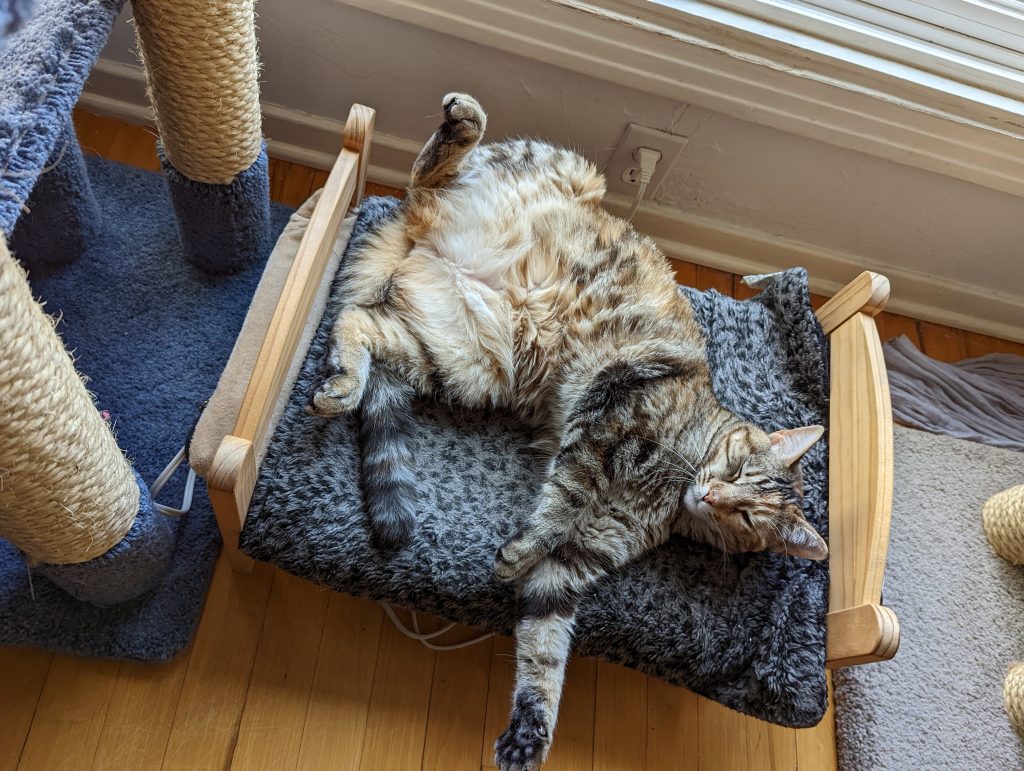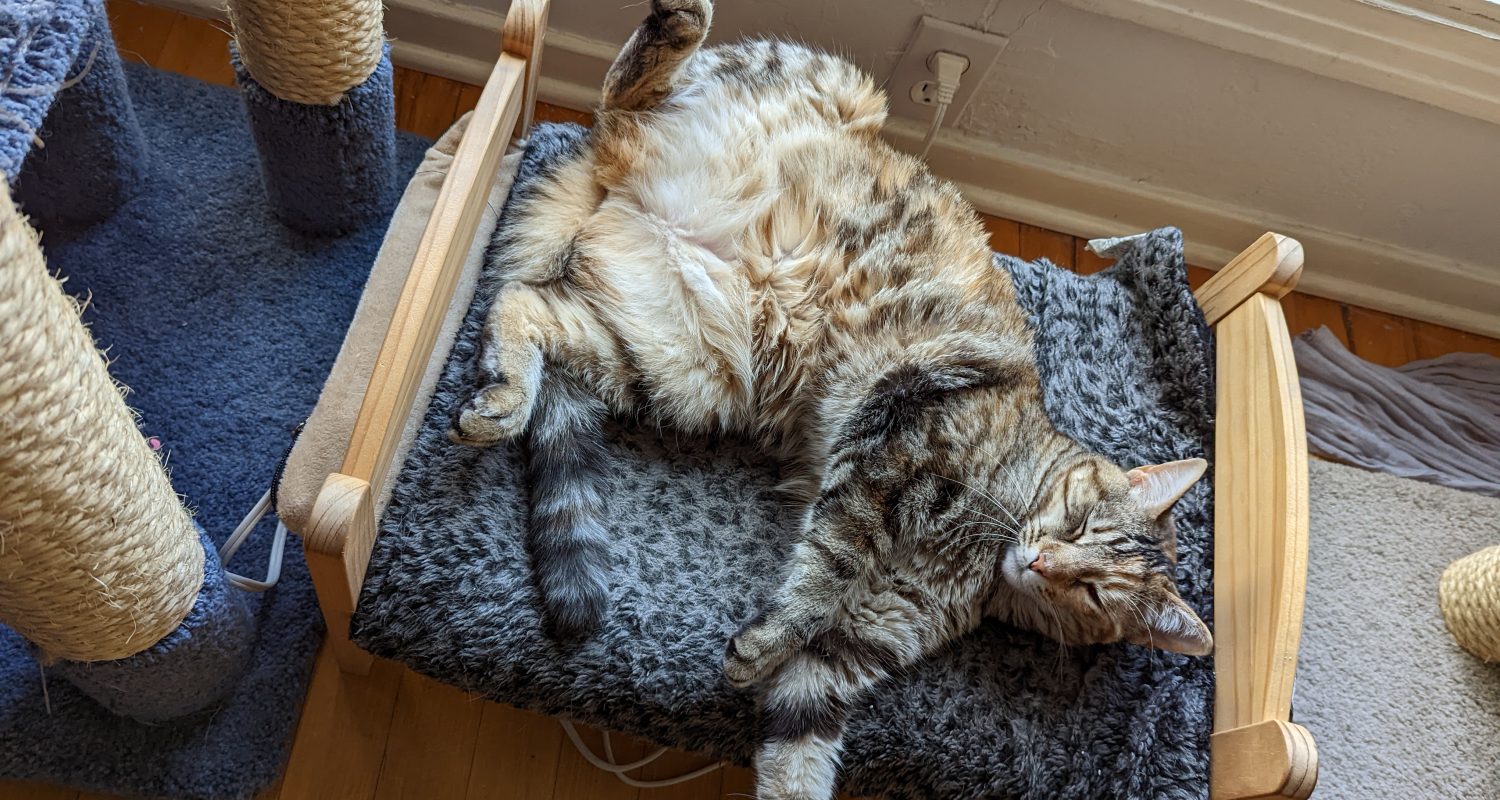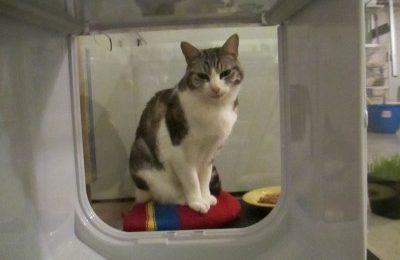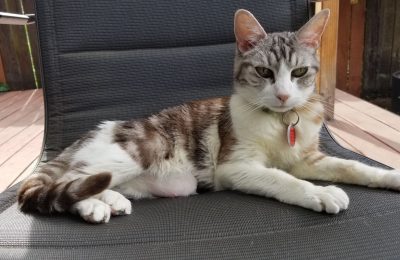A lot of people love cats, and those same people also usually love petting cats. What’s not to love? Cats are cute, they are oh-so-soft, and they purr! But do cats love being petted as much as we enjoy petting them? Not necessarily!
Petting-induced aggression is a common form of feline aggression, where a cat bites, scratches, or shows other signs of irritation when handled beyond their tolerance. Each cat’s tolerance for handling can vary widely, meaning that people may be at risk of injury if they don’t know how to read feline body language, or don’t stop petting when their cat is giving signs they are annoyed.

On the other hand, are some people intuitive cat-petters? And what might explain why some people are really good at petting cats, and others might be less than successful when they approach a cat? Leave it up to science to take a stab at answering these questions!!
In a recent study, “Investigation of humans’ individual differences as predictors of their animal interaction styles, focused on the domestic cat,” Dr. Lauren Finka and colleagues observed dozens of interactions between humans and cats in a rescue shelter.
Members of the public (not just cat adopters) we invited to participate. They were asked to complete several surveys including questions about their cat experience, their knowledge of cat behavior and body language, and their personality traits. The personality measure was a commonly used research tool known as the Big Five Inventory, which measures self-report on the traits Agreeableness, Openness, Extraversion, Conscientiousness and Negative Emotionality.
One hundred and nineteen humans and 100 cats contributed data to the study. All cats had been assessed as friendly and comfortable with humans. Each human participant interacted separately with three different cats they had never met before, for five minutes each, in each cat’s room at the shelter.
Participants were asked to behave as they normally would around each cat, with the only requirement that they stay seated in the provided chair for the duration of the experiment (so if a cat walked away, the human could NOT get up and follow them). All sessions were recorded for later analysis.
The researchers were interested how well the participants behavior would align with what are considered “best practices” for cat interactions (using the acronym CAT):
- providing the cat with Choice and control during the interaction
- paying Attention to the cat’s body language and behavior
- Touching the cat in areas that are known to be preferred by most cats and avoiding areas that are known to be irritating to most cats
Each participant was scored on how well their behavior aligned with each of these principles, as well as how frequently they initiated interactions with the cat and touched green, yellow, or red areas of the cat (see graphic). Two previous studies have supported that overall, cats are more receptive to pets to the cheeks, chin, forehead and least enjoy touch on the belly and base of the tail, with other areas of the body being considered “intermediate” in preference. This doesn’t mean that every cat prefers or dislikes these areas, but as a population, most cats have these preferences.

After analyzing the videos and surveys, the researchers were able to find some interesting relationships between human traits, and their tendencies to follow best practices when interacting with cats. They were able to categorize interactions by behaviors such as focuses only on green areas (good), touching red areas (bad), trying to restrain the cat (bad), letting the cat choose the pace of interactions (good), and frequent touching of yellow areas (not great).
What kind of traits led someone to be more likely to fall into one of these categories? People who focused on green areas did report a higher level of knowledge about cats…but the same way true of the people who touched the red areas! So self-professed cat-savvy was not a great predictor of whether they would touch cats in areas they prefer.
Those who tried to restrain or hold the cat tended to be in the older age category (56+) and scored higher on the personality trait Negative Emotionality (which describes “typical” levels of feelings like depression, hostility, and anxiety). Those who were more likely to let the cat choose the pace of the interaction had fewer years of experience living with a cat, and those who were more likely to touch the “yellow” zones had more years of experience living with a cat, and also tended to score higher on the personality trait Extraversion (how outgoing they are).
This studied echoed a similar finding of human interactions with dogs, such that thinking highly of one’s own knowledge is not a good predictor of being able to interact positively with that species! It is common when asking people about their skills or knowledge that they rate themselves more highly than an objective assessment would do, or if asked to compare themselves to their peers.
Further, years of experience with cats was also not a good predictor of interactions that would be high-quality for the cat. Of course, every cat is an individual, and some may be okay with handing in the red or yellow zones, but those are not areas that I would recommend touching until you know a cat well.
Can you teach an old human new tricks? When it comes to cat handling, all is not lost. A 2021 study by the same team found that when you provide people with basic guidelines about handling cats (via a short training video and a handout), people were more likely to follow best practices with any cats they visited AFTER training, resulting in more positive body language and fewer signs of irritation in the cats they visited.
Here’s a great video example of how we can educate people on the CAT guidelines:
So – if people are open to learning (or just willing to watch a video) we can help them have better interactions with cats – not just cats that might be interacting with for a scientific study, but the cats they live with too! No matter how much experience we have with cats, it is very easy to forget to be mindful when we are petting our cats. We often aren’t checking if our cats are enjoying the touch as much as we are.
As I mentioned before, petting aggression is pretty darn common. And to think it is entirely caused by OUR behavior! I can’t tell you how many times I advise my clients to just stop petting their cats so much…and they STRUGGLE with hearing that advice. But cats tend to prefer high-frequency, low-intensity contact over the opposite. A heavy-duty, long love fest is more likely to result in feline irritation than anything else. THINK BEFORE YOU PET!
References
Ellis, S. L. H., Thompson, H., Guijarro, C., & Zulch, H. E. (2015). The influence of body region, handler familiarity and order of region handled on the domestic cat’s response to being stroked. Applied Animal Behaviour Science, 173, 60-67.
Finka, L. R., Ripari, L., Quinlan, L., Haywood, C., Puzzo, J., Jordan, A., … & Brennan, M. L. (2022). Investigation of humans individual differences as predictors of their animal interaction styles, focused on the domestic cat. Scientific Reports, 12(1), 1-13.
Haywood, C., Ripari, L., Puzzo, J., Foreman-Worsley, R., & Finka, L. R. (2021). Providing Humans With Practical, Best Practice Handling Guidelines During Human-Cat Interactions Increases Cats’ Affiliative Behaviour and Reduces Aggression and Signs of Conflict. Frontiers in Veterinary Science, 835.
Soennichsen, S., & Chamove, A. S. (2002). Responses of cats to petting by humans. Anthrozoös, 15(3), 258-265.




One thought on “Do people know how to pet cats?”